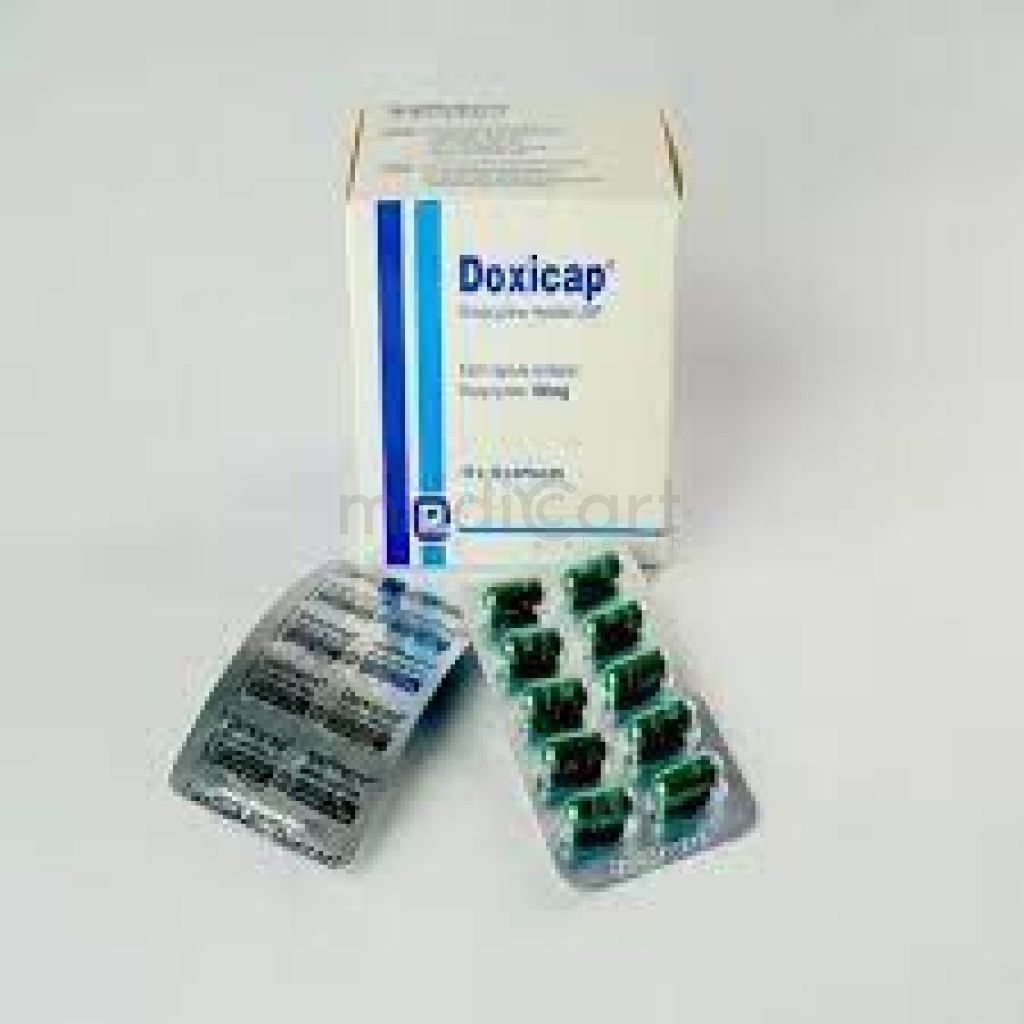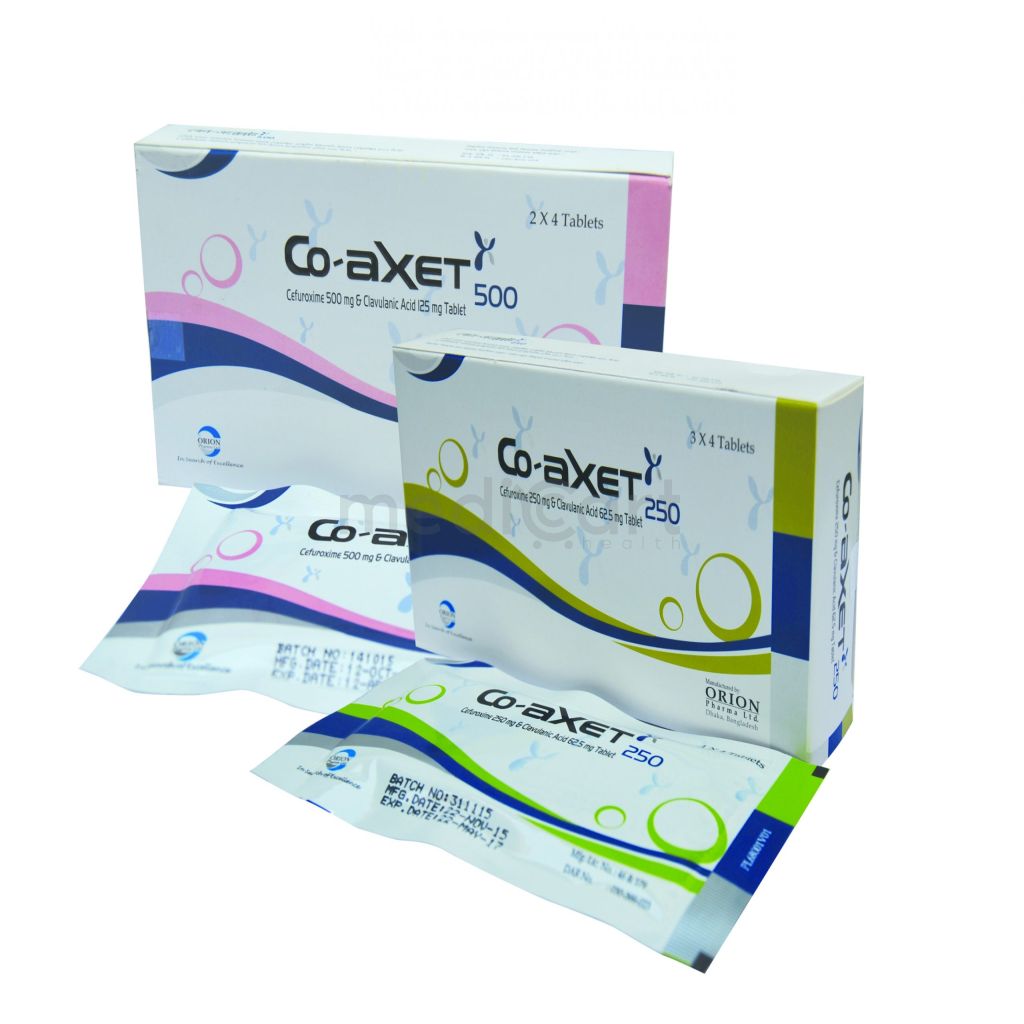

Best Price *
TK
14.20
* Delivery will be done in Dhaka city only.
More Information About - Doxicap 50mg
Description
Generic Name
DoxycyclinePrecaution
The use of drugs of tetracycline group during tooth development (last half of pregnancy, infancy and childhood to the age of 12 years) may cause permanent discoloration of the teeth. Tetracyclines, therefore, should not be used in this age group unless other drugs are not likely to be effective or are contraindicated. Lactation: Enters breast milk; Not recommendedIndication
Acne, Susceptible infections, Syphilis, Uncomplicated gonorrhoea, Relapsing fever, louse-borne typhus, Scrub typhusContra Indication
It is contraindicated to patients with known hypersensitivity to any of the tetracyclines. It is also contraindicated in severe hepatic disorder and patients with systemic lupas erythematosus. Concomitant intake of alkalis, antacids and iron may interfere with the absorption of Doxycycline. It is advisable to avoid giving doxycycline in conjunction with penicillin. Doxycycline should not be used in pregnant women unless, in the judgment of the physician, it is essential for the welfare of the patient.Dose
N/ASide Effect
Hypotension, pericarditis, angioneurotic oedema, dyspnoea, serum sickness, peripheral oedema, tachycardia, urticaria, haemolytic anaemia, thrombocytopenia, neutropenia, porphyria, eosinophilia, brown-black microscopic discolouration of thyroid tissue, headache, bulging fontanelles in infants and benign intracranial HTN in adults, blurring of vision, scotomata, diplopia, tinnitus, abdominal pain, stomatitis, anorexia, nausea, vomiting, diarrhoea, dyspepsia, oesophageal ulceration, discolouration of teeth, enamel hypoplasia, transient increases in LFT and BUN, jaundice, pancreatitis, rashes, exfoliative dermatitis, photo-onycholysis, photosensitivity, arthralgia, myalgia, vaginitis. Potentially Fatal: Anaphylactoid reactions, Stevens-Johnson syndrome, toxic epidermal necrolysis, Clostridium difficile-associated disease (CDAD), hepatotoxicity.Pregnancy Category
Name : Not Classified
Description
FDA has not yet classified the drug into a specified pregnancy category.Mode of Action
Doxycycline inhibits bacterial protein synthesis by binding to the 30S ribosomal subunit. It has bacteriostatic activity against a broad range of gm+ve and gm-ve bacteria.Interaction
Concomitant use w/ isotretinoin is known to cause pseudotumour cerebri. Prolonged prothrombin time w/ anticoagulants (e.g. warfarin). May interfere w/ the bactericidal action of penicillin. Impaired absorption w/ antacids containing Al, Ca, or Mg, oral Zn, Fe salts, and bismuth preparations. Increased metabolism w/ phenobarbital, carbamazepine, primidone and phenytoin. Risk of breakthrough bleeding w/ oral contraceptives. Increased plasma concentration of ciclosporin. Decreased half-life w/ hepatic enzymes inducers (e.g. rifampicin). Potentially Fatal: Concurrent use w/ methoxyflurane may result to fatal renal toxicity.Pregnancy Category Note
Pregnancy Not studied in pregnant patients; the vast majority of reported experience with doxycycline during human pregnancy is short-term, first trimester exposure; there are no human data available to assess effects of long-term therapy of doxycycline in pregnant women, such as that proposed for treatment of anthrax exposure; it should not be used in pregnant women unless, in judgment of physician, it is essential for welfare of patient; evidence of embryotoxicity has been noted in animals treated early in pregnancy Lactation Tetracyclines are excreted in human milk; however, extent of absorption of tetracyclines, including doxycycline, by breastfed infant is not known; short-term use by lactating women is not necessarily contraindicated; however, effects of prolonged exposure to doxycycline in breast milk are unknown;11 because of potential for serious adverse reactions in nursing infants from doxycycline, a decision should be made whether to discontinue nursing or to discontinue the drug, taking into account importance of drug to motherAdult Dose
Oral Susceptible infections Adult: 200 mg on day 1 as a single or in divided doses, followed by 100 mg once daily. Severe infections: Maintain initial dose throughout the course of treatment. Sexually Transmitted Diseases Uncomplicated gonococcal infection of the cervix, urethra, and rectum, Uncomplicated urethral, endocervical, or rectal infection caused by Chlamydia trachomatis, Nongonococcal urethritis caused by C. trachomatis and U. urealyticum 100 mg PO q12hr for 7 days Syphilis (early): Patients who are allergic to penicillin should be treated with doxycycline 100 mg PO BID x 2 weeks Syphilis >1 year duration: Patients who are allergic to penicillin should be treated with doxycycline 100 mg PO BID x 4 weeks Acute epididymo-orchitis caused by N. gonorrhoeae or C trachomatis: 100 mg PO BID x least 10 days Acne, Rosacea Adult: 50 mg daily for 6-12 wk. Malaria Indicated for prophylaxis of malaria due to Plasmodium falciparum in short-term travelers (ie, <4 months) to areas with chloroquine and/or pyrimethamine-sulfadoxine resistant strain Prophylaxis: 100 mg PO qDay; begin taking 1-2 days before travel and continue daily during travel and for 4 weeks after traveler leaves malaria infested area Intestinal Amebiasis, Respiratory Tract Infections Indicated for adjunctive therapy to amebicides for acute intestinal amebiasis 100 PO q12hr on day 1, then 100 mg PO qDay Rickettsial Infections Indicated for Rocky Mountain spotted fever, typhus fever and the typhus group, Q fever, rickettsial pox, and tick fevers caused by Rickettsiae 100 PO q12hr on day 1, then 100 mg PO qDay Brucellosis Brucellosis due to Brucella species 100 mg PO twice daily for 6 weeks with rifampin or streptomycin Cholera Indicated for cholera caused by Vibrio cholerae 300 mg PO once; adjunct to fluid and electrolyte replacement Acute Bacteria Rhinosinusitis 200 mg/day PO qDay or divided BID for 5-7 days Anthrax Postexposure prophylaxis: 100 mg PO BID for 60 days Infective Endocarditis Suspected Bartonella infection with a negative culture: 100 mg PO BID x 6 weeks in combination with gentamicin and ceftriaxone Positive culture Bartonella infection: 100 mg PO BID x 6 weeks in combination with gentamicin or rifampinChild Dose
Children: PO >8 y, <45 kg: 2?4 mg/kg/day q12hRenal Dose
N/AAdministration
May be taken with or without food. Take w/ a full glass of water & remain upright for at least ? hr. Take w/ food or milk if GI irritation occurs.Disclaimer
The information provided herein are for informational purposes only and not intended to be a substitute for professional medical advice, diagnosis, or treatment. Please note that this information should not be treated as a replacement for physical medical consultation or advice. Great effort has been placed to provide accurate and comprehensive data. However, Medicart along with its authors and editors make no representations or warranties and specifically disclaim all liability for any medical information provided on the site. The absence of any information and/or warning to any drug shall not be considered and assumed as an implied assurance of the Company.









